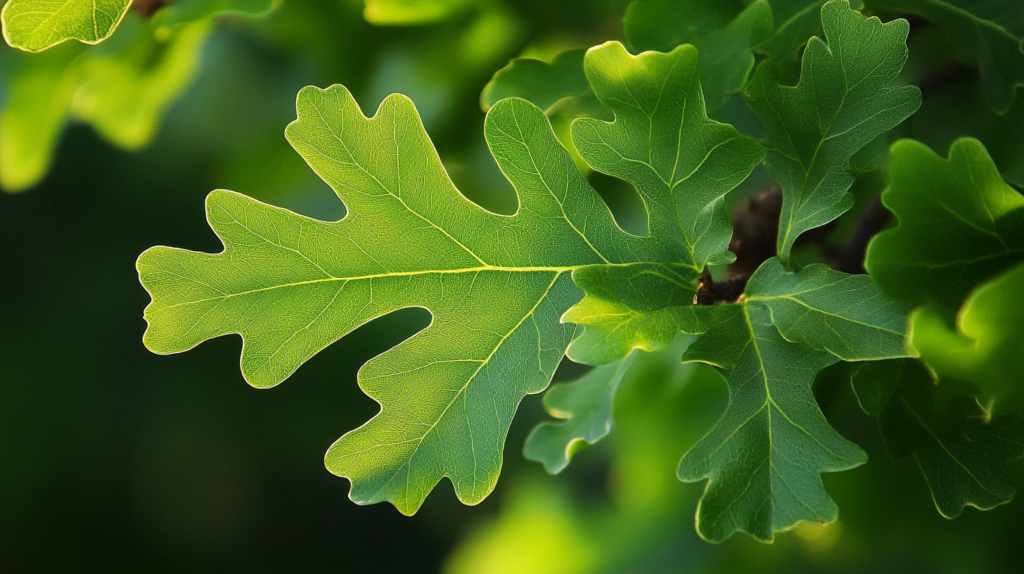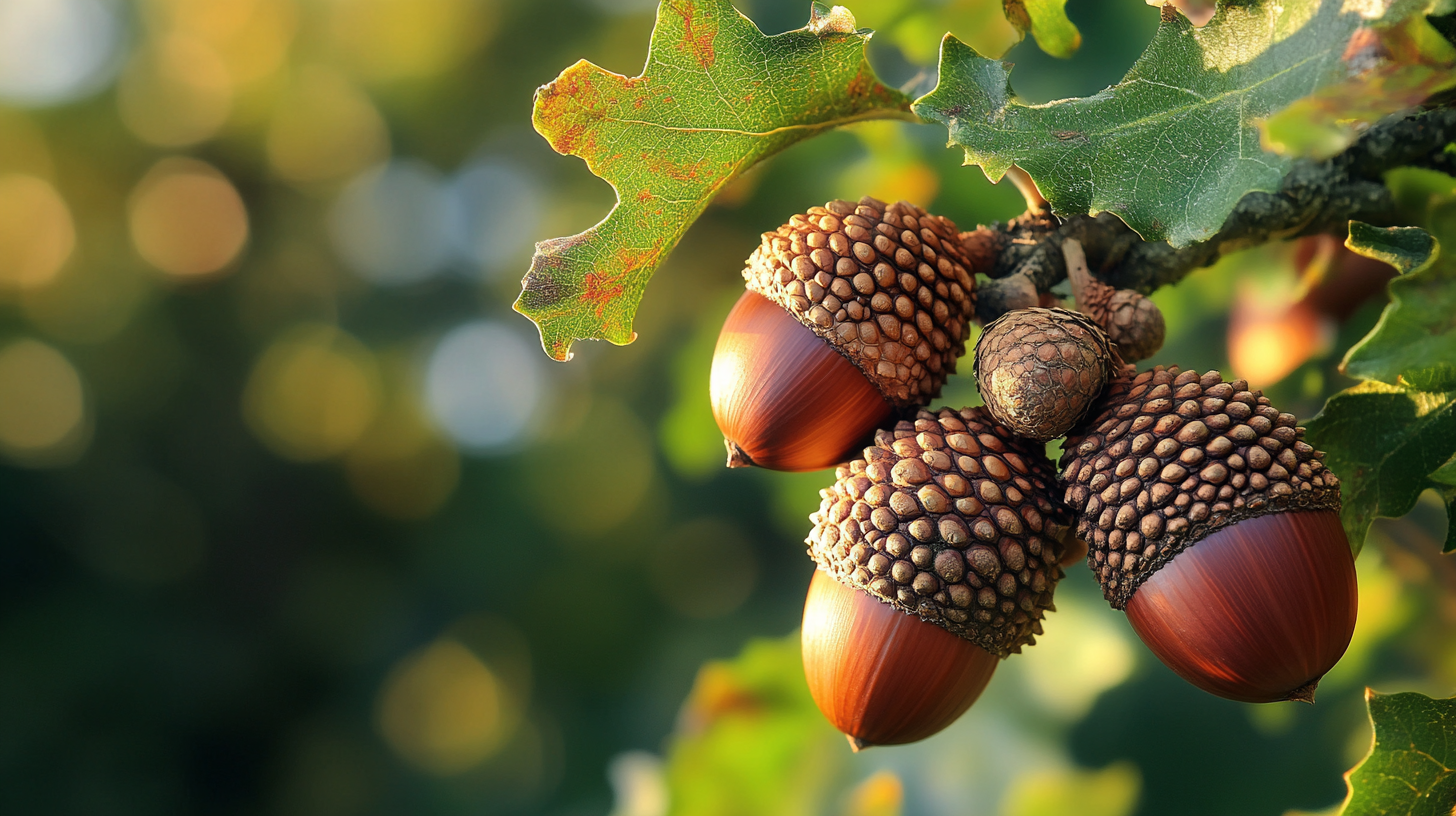Table of Contents
Oak trees, with their majestic presence and sturdy branches, have long been a symbol of strength and endurance in many cultures. But beyond their impressive stature, there’s a question that often pops up among gardeners and nature enthusiasts: are oak tree leaves acidic? This isn’t just idle curiosity. The acidity of oak leaves can have a significant impact on soil composition, plant growth, and even the wider ecosystem. Let’s dive into the leafy world of oaks and uncover the truth about their acidity.
Understanding Leaf Acidity: The Basics
Before we tackle the specifics of oak leaves, it’s crucial to grasp what we mean by leaf acidity. When we talk about acidity, we’re referring to the pH level of a substance. The pH scale runs from 0 to 14, with 7 being neutral. Anything below 7 is acidic, while anything above is alkaline.
What Makes Leaves Acidic?
Leaves can become acidic due to various factors:
- Chemical composition: The presence of organic acids in the leaf structure
- Environmental conditions: Exposure to acid rain or pollutants
- Soil characteristics: The type of soil the tree grows in can influence leaf chemistry
It’s important to note that leaf acidity isn’t static. It can change over time, especially as leaves decompose.
Oak Tree Leaves: A Closer Look
Oak leaves are as diverse as the many species of oak trees out there. Generally, they’re known for their lobed shape and leathery texture. But when it comes to acidity, not all oak leaves are created equal.
Characteristics of Oak Leaves
Oak leaves typically have:
- A waxy cuticle that protects them from water loss
- Tannins, which give them a slightly bitter taste
- A tendency to decompose slowly compared to other tree leaves
These characteristics play a role in how oak leaves interact with the soil and surrounding plants.
The Acidity of Oak Tree Leaves: Myth vs. Reality
Now, let’s address the burning question: are oak tree leaves acidic? The short answer is yes, but it’s not as straightforward as you might think.
Scientific Evidence on Oak Leaf Acidity
Fresh oak leaves are indeed slightly acidic, with a pH typically ranging from 4.5 to 6.0. However, this acidity level isn’t constant. As oak leaves decompose, their pH can change. Here’s a comparison of oak leaves with other common tree species:
| Tree Species | Fresh Leaf pH | Decomposed Leaf pH |
|---|---|---|
| Oak | 4.5 – 6.0 | 6.0 – 6.5 |
| Maple | 5.5 – 6.5 | 6.5 – 7.0 |
| Pine | 3.2 – 3.8 | 4.0 – 4.5 |
| Beech | 5.0 – 6.0 | 6.0 – 7.0 |
As you can see, while oak leaves start out acidic, they become less so as they break down.
Factors Affecting Oak Leaf Acidity
The acidity of oak leaves isn’t set in stone. Several factors can influence their pH levels:
Soil Composition and Its Impact
The soil where an oak tree grows can significantly affect its leaf chemistry. Trees growing in naturally acidic soils may produce leaves with lower pH levels. Conversely, those in more alkaline soils might have less acidic leaves.
Environmental Influences
Climate, weather, and pollution all play a role in leaf acidity. For instance, areas with high levels of acid rain might see more acidic oak leaves. Similarly, drought conditions can concentrate the acids in leaves, potentially lowering their pH.
The Journey from Tree to Ground: How Oak Leaves Change
When oak leaves fall from the tree, they begin a fascinating journey of decomposition. This process not only breaks down the leaf structure but also alters its chemical composition.
Fresh vs. Decomposing Oak Leaves
Fresh oak leaves are more acidic than those that have been on the ground for a while. As they decompose, microorganisms break down the organic acids in the leaves, gradually raising the pH. This process can take several months to a year, depending on environmental conditions.
Oak Leaves and Soil pH: A Complex Relationship
The interaction between oak leaves and soil is a two-way street. While the soil influences leaf chemistry, fallen leaves also affect the soil beneath them.
How Fallen Oak Leaves Affect Soil
When oak leaves decompose, they release tannins and other compounds into the soil. Initially, this can create a slightly more acidic environment. However, over time, as the leaves break down further, they tend to have a neutralizing effect on soil pH.
Practical Implications of Oak Leaf Acidity
Understanding the acidity of oak leaves isn’t just academic knowledge—it has real-world applications, especially for gardeners and landscapers.
Gardening with Oak Leaves
Oak leaves can be a valuable resource in the garden. Here’s how you can use them:
- Mulch: Oak leaves make excellent mulch, helping to retain soil moisture and suppress weeds.
- Compost: While they decompose slowly, oak leaves can be a great addition to compost piles, adding organic matter to the soil.
Impact on Plant Growth
The slight acidity of oak leaves can benefit acid-loving plants like:
- Azaleas
- Rhododendrons
- Blueberries
- Hydrangeas
However, plants that prefer more alkaline soil might struggle if too many oak leaves are left to decompose around them.
Measuring Oak Leaf Acidity: DIY Methods
If you’re curious about the acidity of oak leaves in your yard, there are simple ways to test it:
- Collect a handful of oak leaves and crush them.
- Place the crushed leaves in a jar with distilled water.
- Let the mixture sit for 24 hours.
- Use a pH testing kit to measure the acidity of the water.
This method will give you a rough idea of the acidity level of your oak leaves.
Oak Leaves vs. Other Tree Leaves: An Acidity Comparison
While oak leaves are somewhat acidic, they’re not the most acidic leaves out there. Pine needles, for example, are generally more acidic. Here’s a quick comparison:
- Oak leaves: pH 4.5 – 6.0
- Pine needles: pH 3.2 – 3.8
- Maple leaves: pH 5.5 – 6.5
- Birch leaves: pH 5.0 – 6.0

The Benefits of Oak Leaves in Your Garden
Despite their acidity, oak leaves offer several benefits to your garden:
- Rich in nutrients: As they decompose, oak leaves release valuable nutrients into the soil.
- Improve soil structure: The slow decomposition of oak leaves helps improve soil texture over time.
- Attract beneficial insects: The leaf litter provides habitat for beneficial insects and microorganisms.
Managing Oak Leaf Acidity in Your Landscape
If you’re concerned about the acidity of oak leaves in your yard, there are ways to manage it:
- Rake and compost: Collect fallen leaves and add them to a compost pile where they can break down more quickly.
- Mix with other materials: When using oak leaves as mulch, mix them with other less acidic materials.
- Monitor soil pH: Regularly test your soil pH and adjust as needed with lime if it becomes too acidic.
Conclusion: Embracing the Complexity of Oak Leaf Acidity
So, are oak tree leaves acidic? Yes, but it’s not a simple yes or no answer. The acidity of oak leaves is a dynamic property that changes over time and depends on various factors. While fresh oak leaves are slightly acidic, their impact on soil and plants is generally mild and can even be beneficial in many cases.
Understanding the nature of oak leaf acidity allows us to better appreciate the complex relationships in our gardens and forests. By managing oak leaves thoughtfully, we can harness their benefits while mitigating any potential drawbacks. Whether you’re a gardener, a nature enthusiast, or simply curious about the world around you, the humble oak leaf has much to teach us about the intricate balance of nature.




